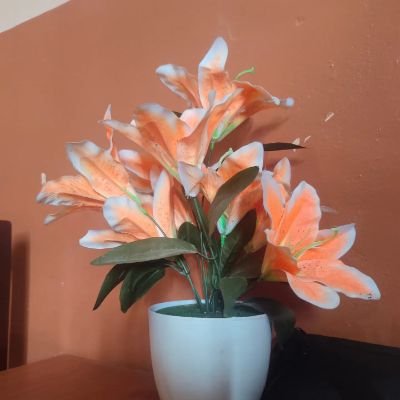Similar User

@kakakiyaa

@JkDiie

@logo_ed

@narniaandmoon
The publication of Conference Proceedings Book on "3rd Edition International Conference on Physics and Quantum Physics, 25-26 March 2024, Barcelona, Spain." is in Research Gate. 👉 Share link: dx.doi.org/10.13140/RG.2.… #Conference #Physics #QuantumPhysics #ProceedingsBook
Jupiter, Uranus and Neptune captured by JWST



The Graceful, winding arms of the Majestic spiral galaxy M51 🌌

“Somewhere, something incredible is waiting to be known.” - Carl Sagan

🌀 Hyperbolic beauty. The Rössler attractor is a space phase modeled after the Rössler mathematical system originated in 1976 by the German biochemist Otto Rössler. The original design was intended to behave similarly to the Lorenz attractor but in a more simplified way to be…
The Thomas attractor is a mathematical concept in dynamical systems theory representing a type of chaotic space phase that exhibits cyclic symmetry. It was named after René Thomas, the mathematician who introduced it in 1979. The system is strictly related to the Lorenz attractor…
Mathematics. A close look at the infinite swirling of the Rössler Attractor, which exhibits chaotic dynamics associated with the fractal properties of the attractor. Like a cosmic taffy-pulling machine. By Marcus Volz, marcusvolz.com, Used with permission.
𝗗𝗼𝘂𝗯𝗹𝗲 𝗣𝗲𝗻𝗱𝘂𝗹𝘂𝗺 is simplest mechanical system with CHAOS. Obvious are regions of chaotic vs periodic motion. Such systems are sensitive to initial conditions, nearby solutions rapidly diverge. FULL screen ⛶ ⏸ ⏪ ⏩ community.wolfram.com/groups/-/m/t/3…
🌌 Exciting news! Join us in Berlin from October 24-26, 2025, for the Global Meet & Expo on Astronomy, Astrophysics, and Space Technology! 🔭 Connect with leading experts, explore groundbreaking research, and discuss the future of space exploration. astrophysics.academynature.org
Cosmic fireworks in time for the Fourth of July✨ A fiery hourglass marks this cosmic object that's turning into a star. @NASAWebb's Mid-Infrared Instrument spotted this protostar 460 light-years from Earth in the constellation Taurus: go.nasa.gov/3xV15Db

Timelapse of Europa and Io passing over Jupiter’s great red spot made using hundreds of images capture by NASA Cassini
Hoag’s Object is a rare ring galaxy located over 600 million light-years from Earth. A near perfect circle full of young bright blue stars is formed around a ball of older mostly red giant stars. In between is a gap that appears almost completely empty. Delightfully distinctive.

Capturing #CosmicCollisions since 1990 📸 Arp 300, which consists of two interacting galaxies, shines in this new @NASAHubble image. To the southeast of the smaller galaxy, we can see a bright knot that may be the remnant of another galaxy merging. MORE: go.nasa.gov/49evEkh

Yesterday's coronal rain on the Sun (Credits: NASA / SDO / AIA)

Deep beneath Jupiter’s frozen moon Europa lies a massive liquid water ocean. Exploring this ocean world with our @EuropaClipper spacecraft could offer clues in our search for life beyond Earth. Here’s what you need to know about Europa: europa.nasa.gov/why-europa/ove…
The sound of a black hole. Recorded by NASA's Chandra X-ray Observatory 😱
Comet C/2021 A1 Leonard, captured remotely from Namibia by Michael Jäger on 12/25/2021. 🤯😳🤩

Imagine watching your life's work parachute in from space. Experience the joy and suspense of the OSIRIS-REx mission team as their asteroid sample lands on Earth in our newest episode of #NASAExplorers: plus.nasa.gov/series/nasa-ex…
United States Trends
- 1. Army 328 B posts
- 2. $PHNIX 9.616 posts
- 3. $CUTO 11,4 B posts
- 4. Chris Christie 4.515 posts
- 5. Arsenal 187 B posts
- 6. Pachuca 17,6 B posts
- 7. Liverpool 144 B posts
- 8. Marshall 21,8 B posts
- 9. #CelebrationBowl N/A
- 10. Cherry Boom Christmas N/A
- 11. SC State 2.260 posts
- 12. #SNME 15,2 B posts
- 13. Nottingham Forest 7.253 posts
- 14. Kidney 7.009 posts
- 15. Memphis 15,3 B posts
- 16. Devin Nunes 4.449 posts
- 17. Karr 1.496 posts
- 18. Independence Bowl 1.234 posts
- 19. Jackson State 2.162 posts
- 20. Arteta 54,4 B posts
Something went wrong.
Something went wrong.



















































































































